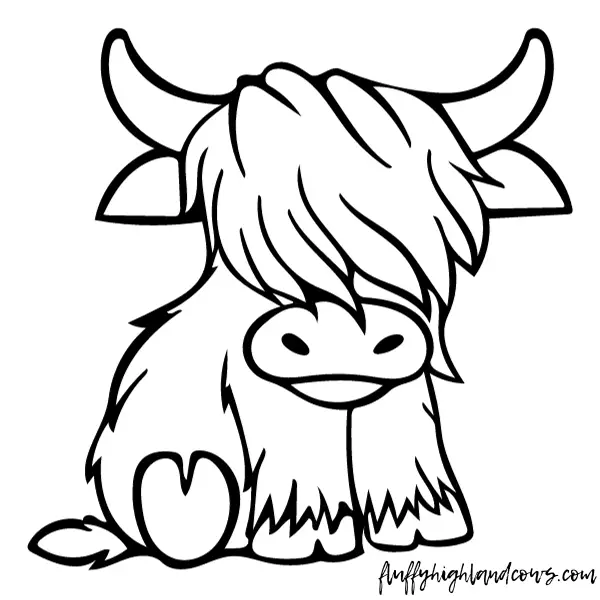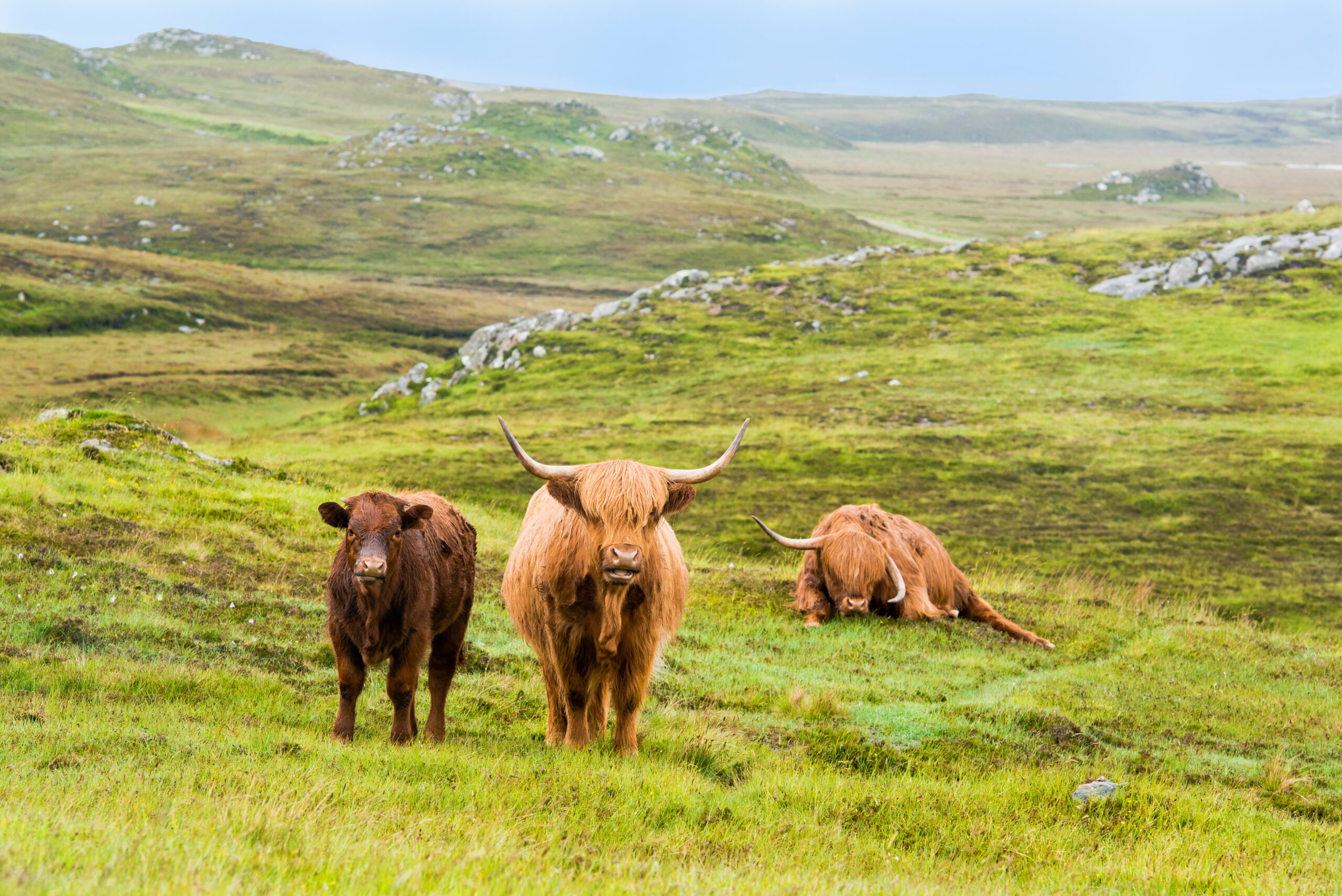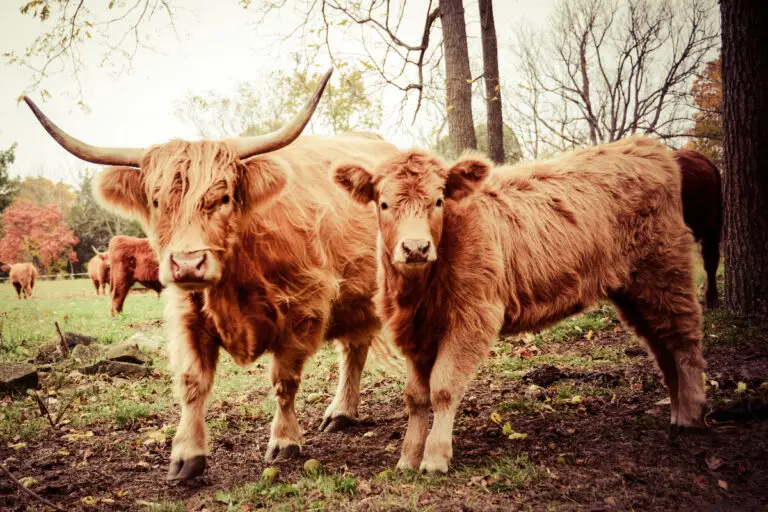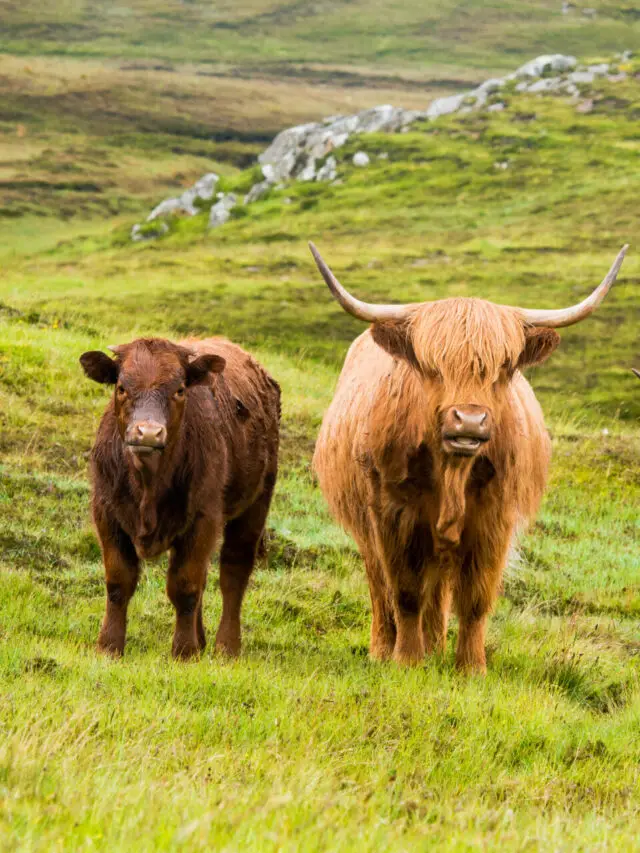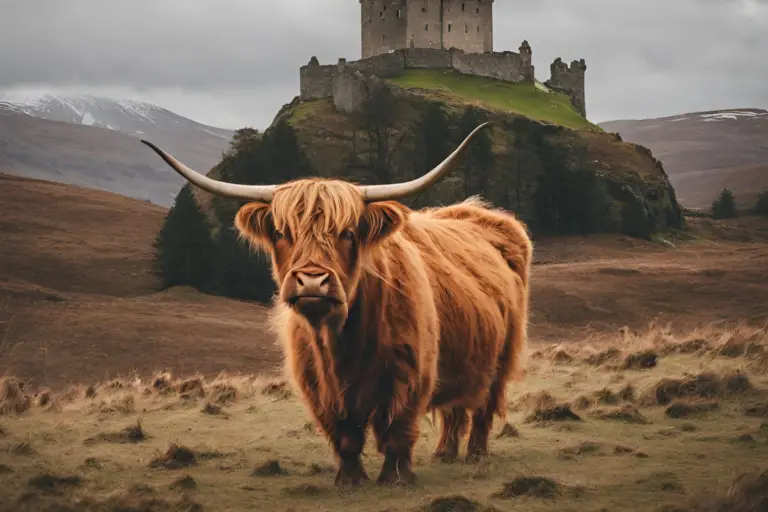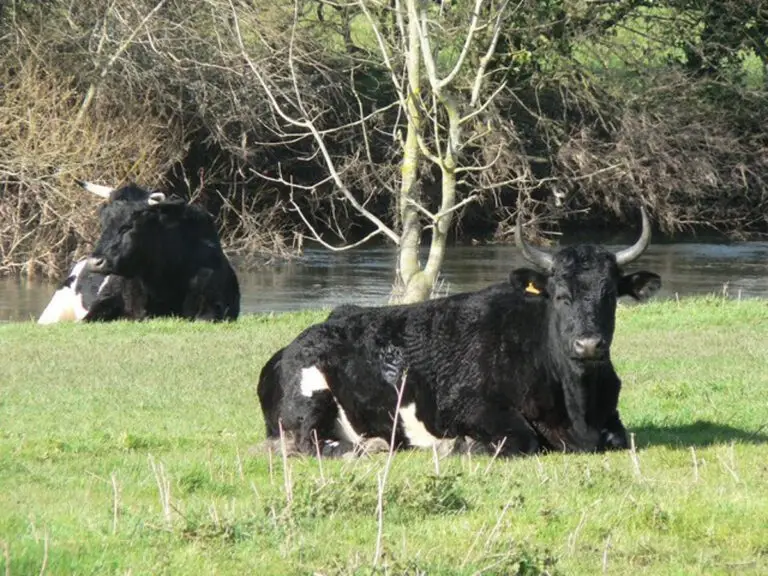The Highland Cattle: A Legacy of Resilience and Quality from the Scottish Highlands
Highland cattle, with their distinctive shaggy coats and long, sweeping horns, are emblematic of the rugged beauty and rich heritage of the Scottish Highlands. These cattle are not just a symbol of the region’s natural splendor but also represent a breed of significant agricultural value, known for their hardiness, maternal instincts, and exceptional beef quality.
Origins and History
Originating from the harsh and unforgiving landscapes of the Scottish Highlands and the west coastal islands, Highland cattle have been shaped by centuries of natural selection. This process honed their survival skills, making them adept at thriving in severe climates battered by North Atlantic gales.
Historically, the breed was categorized into two groups: the smaller, often darker Kyloes from the islands, and the larger Highlanders from the mainland. The differences in size were likely due to environmental factors rather than genetic ones. Today, these cattle are collectively known as Highland cattle.
An interesting cultural tidbit about Highland cattle breeders is their unique terminology; they refer to their group of cattle not as a herd but as a “fold.” This term harks back to the days when cattle were sheltered in stone enclosures or “folds” during the harsh winter months for protection against the elements and predators.
Distinctive Characteristics
Highland cattle are renowned for their majestic appearance, characterized by a long fringe that covers their eyes and impressively long horns that darken towards the tips. They possess a double coat of hair, comprising a downy undercoat and a longer, oily outer coat that repels rain and snow, allowing them to withstand extreme weather conditions. The breed’s coat can vary in color, including black, brindled, red, yellow, and dun, with differing opinions among breeders about the preferred hue.
These cattle are celebrated for their ability to efficiently convert poor grazing into quality beef, thanks to their exceptional hardiness. They are known for their longevity, with many cows breeding well into their late teens and producing numerous calves throughout their lives. The protective nature of Highland cows ensures the safety of their calves and even other livestock grazing in the same pasture.
Beef Quality and Crossbreeding
Highland beef is distinguished by its lean, well-marbled quality, offering a unique flavor that is low in fat and cholesterol yet high in protein and iron. This makes Highland beef a sought-after choice for consumers looking for healthier meat options.
The breed’s adaptability to crossbreeding, particularly with Beef Shorthorn and various continental sires, enhances its hardiness and hybrid vigor, producing offspring that excel in converting hill grazings into premium beef carcasses.
Global Presence and Comparative Advantages
The resilience and foraging efficiency of Highland cattle have led to their popularity beyond Scotland, with significant numbers now found in the Americas, Australasia, Scandinavia, and various European countries. Their ability to thrive in diverse environments, from the Andes to northern Europe, underscores their versatility.
Recent studies have confirmed that Highland beef is significantly leaner and healthier than that of other breeds, with fat and cholesterol levels comparable to chicken and fish. This nutritional advantage, coupled with the breed’s natural grazing habits, makes Highland cattle an ideal choice for sustainable beef production and conservation grazing.
Conclusion
Highland cattle embody the spirit of the Scottish Highlands, offering a blend of aesthetic appeal, agricultural utility, and environmental stewardship. Their enduring legacy, characterized by resilience, maternal strength, and premium beef quality, continues to make them a valued asset in global agriculture and conservation efforts.
